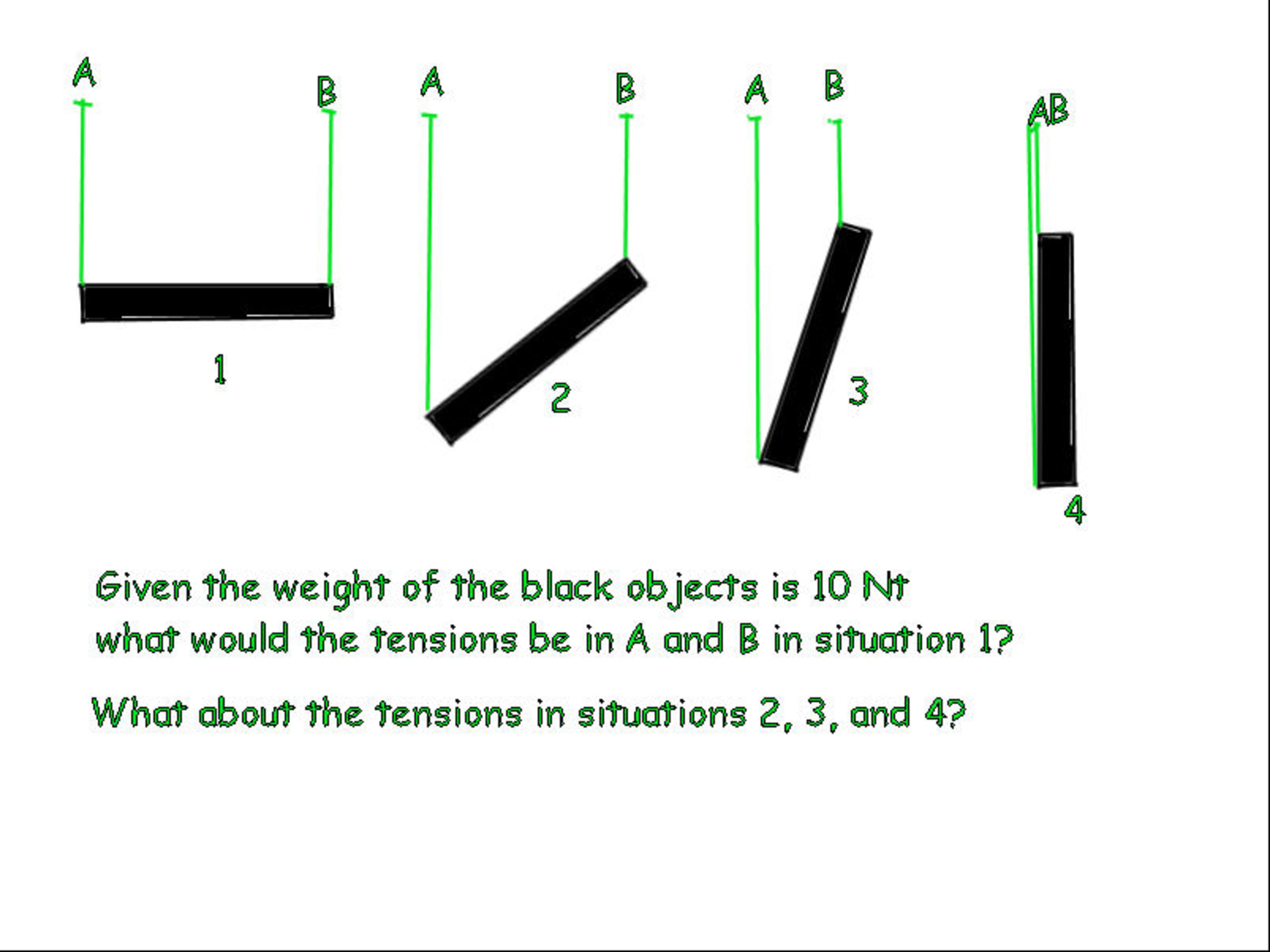Supporting at 2 points
I have a problem calculating tensions on 2 ropes
acting in the same direction supporting an object at 2 points

No vote yet
1 vote
Easy Math Editor
This discussion board is a place to discuss our Daily Challenges and the math and science related to those challenges. Explanations are more than just a solution — they should explain the steps and thinking strategies that you used to obtain the solution. Comments should further the discussion of math and science.
When posting on Brilliant:
*italics*or_italics_**bold**or__bold__paragraph 1
paragraph 2
[example link](https://brilliant.org)> This is a quote# I indented these lines # 4 spaces, and now they show # up as a code block. print "hello world"\(...\)or\[...\]to ensure proper formatting.2 \times 32^{34}a_{i-1}\frac{2}{3}\sqrt{2}\sum_{i=1}^3\sin \theta\boxed{123}Comments
The block is in equilibrium in each case. This means that the net force and the net torque on the block are both zero. Balancing the torques about the center of mass, and the left and right points of suspension will give a set of linear equations which can be used to find the tensions. Do you know how to proceed now?
Log in to reply
Suppose the block has uniform density and has a mass of 1 kg and it has the slope of 1, what are the tensions on each of the vertical ropes?
I' m sorry, I don't. The tangential forces on each end are equal and the arms are equal therefore the tensions will be equal , however my intuition concludes that there is a greater tension on the rope attached to the higher end of the bar.
Log in to reply
Your answer is correct. It may seem unintuitive, but as long as the ropes are vertical and the rod is uniformly distributed, the tension will be equal in both ropes. If the rod is tilted by angle θ, you may look at it as a horizontal rod of length lcosθ.
Log in to reply
I don't believe that the tensions on both ropes are equal regardless of the bars orientation. If the bar is vertical the rope attached to the top will support the total weight and the other will have 0 tension. What am I missing?